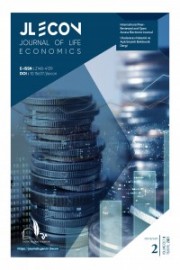Beşerî sermaye ve ekonomik büyüme ilişkisi: farklı gelire sahip ülkeler grubu üzerine bir inceleme
The relation between human capital and economic growth: a study on groups of the countries which have different incomes
Author(s): Bilge Köksel, Hüseyin YılmazSubject(s): Economy, Economic development, Transformation Period (1990 - 2010), Present Times (2010 - today), Human Resources in Economy
Published by: Rating Academy
Keywords: Human Capital; Economic Growth; Panel Data Analysis;
Summary/Abstract: Neo-classical theory to ignore other factors, focusing on the quantitative aspects of growth has led to sustainable growth becomes impossible. The endogenous growth theories that emerged in the second half of the 20th century have changed the assumptions of neo-classical theory, emphasizing the importance of the concept of “human” and pointed to human capital as the “key role” in sustainable growth. Hence, the purpose of this study to examine the effect of human capital on economic growth. Undoubtedly, human capital does not affect the economic development of every country at the same rate. Based on this idea, countries with homogeneous characteristics were classified and countries in the upper income (41 countries), upper middle income (28 countries), lower middle income (32 countries) and lower income (16 countries) groups, whose data can be accessed between 1990 and 2018, were included in the analysis. In order to reach empirical results, Gengenbach, Urbain and Westerlund Panel Cointegration Test, AMG coefficient estimator and Dumitrescu-Hurlin panel causality analysis were used. The cointegration test has shown that there is a cointegration relationship between series in all country groups. According to the results of the AMG coefficient estimator a 1% increase in the human capital index, increases growth by 3.13% in high income countries, 4.44% in upper middle income countries, 2.62% in lower middle income countries and 1.87% in lower income countries. Dumitrescu-Hurlin panel causality analysis revealed that there is bidirectional causality between social capital and gr owth in all country groups. Empirical findings obtained as a result of the analysis showed that human capital is the driving force of the economy, albeit at different rates, regardless of the economic size of the countries.
Journal: Journal of Life Economics
- Issue Year: 8/2021
- Issue No: 2
- Page Range: 157-171
- Page Count: 15
- Language: Turkish

